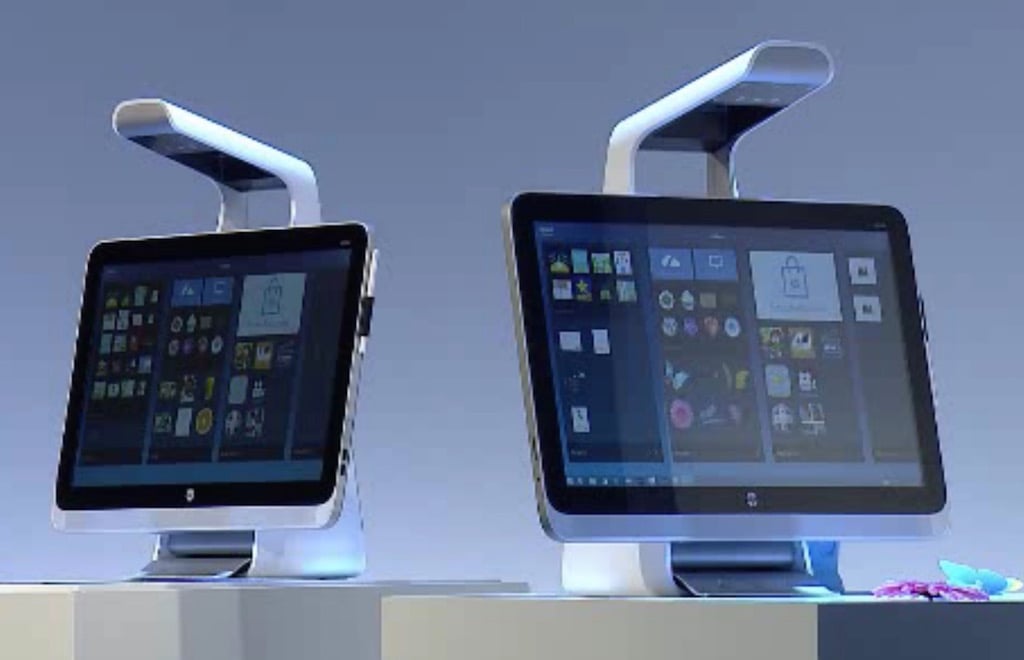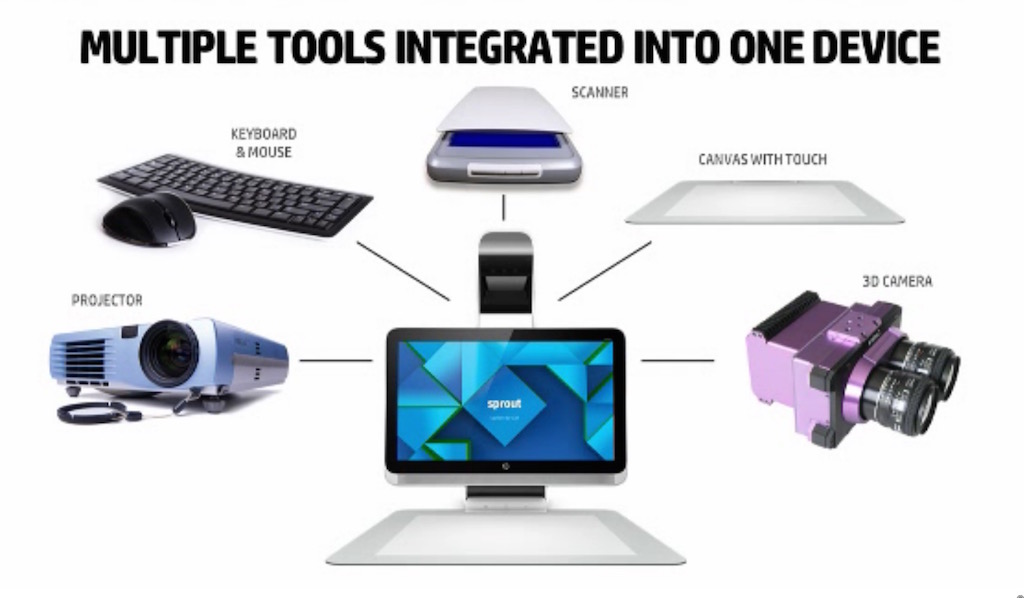
HP made not one, but two announcements today. One of them dealt with 3D creation technology.

It’s a machine they call the “Sprout”, a desktop workstation with several new inputs you wouldn’t find on typical machines.
In addition to the standard screen, mouse and keyboard, the Sprout adds a 3D depth camera, desktop projector, “touch canvas” and scanner. The canvas is positioned flat in front of the screen and that’s where you do most of your work – by touch. The scanner, projector and depth camera are suspended above in a peculiar looking apparatus. The projector provides an image on the canvas for direct finger interaction.
HP showed several applications, but we were disappointed they exhibited limited 3D printing applicability. It seems this is positioned as a consumer/3D artist device and not an industrial design tool. In fact, they said the Sprout would be sold at typical consumer outlets such as Best Buy and played a video a testimonial from other than Martha Stewart, perhaps the celebrity most distant from industrial manufacturing.
One could imagine a 3D modeling company using the new Sprout interface to build an amazing 3D model development platform, but strangely the list of Sprout partners includes no 3D modeling companies and a lot of consumer-oriented organizations. No manufacturing example uses were shown. This, in spite of a brief video appearance of Autodesk’s chief. Nevertheless, we strongly suspect Autodesk and others will attempt to use this new technology to develop variations of their content creation tools. They’re just not ready to show anything yet.
One very suspicious event occurred during HP’s announcement. HP showed how an object could be placed under the 3D depth camera for 3D scanning. But the depth camera can only detect the exposed top of the scanned object facing upwards where the camera is located. The depth camera cannot scan the bottom of an object unless it’s rotated. In spite of this, HP showed a printed 3D figurine said to have been scanned by Sprout. We have no idea how they did this with the Sprout as shown – and suspect they might have some type of unseen rotisserie-like attachment to spin objects for the camera.
The Sprout platform appears quite powerful, but it’s just a platform that will have to be energized by custom-developed software. The key for HP will be to attract software developers to the platform. If they don’t, it’s not going anywhere. We’re wondering whether 3D printing software companies will dive into Sprout. Time will tell.



